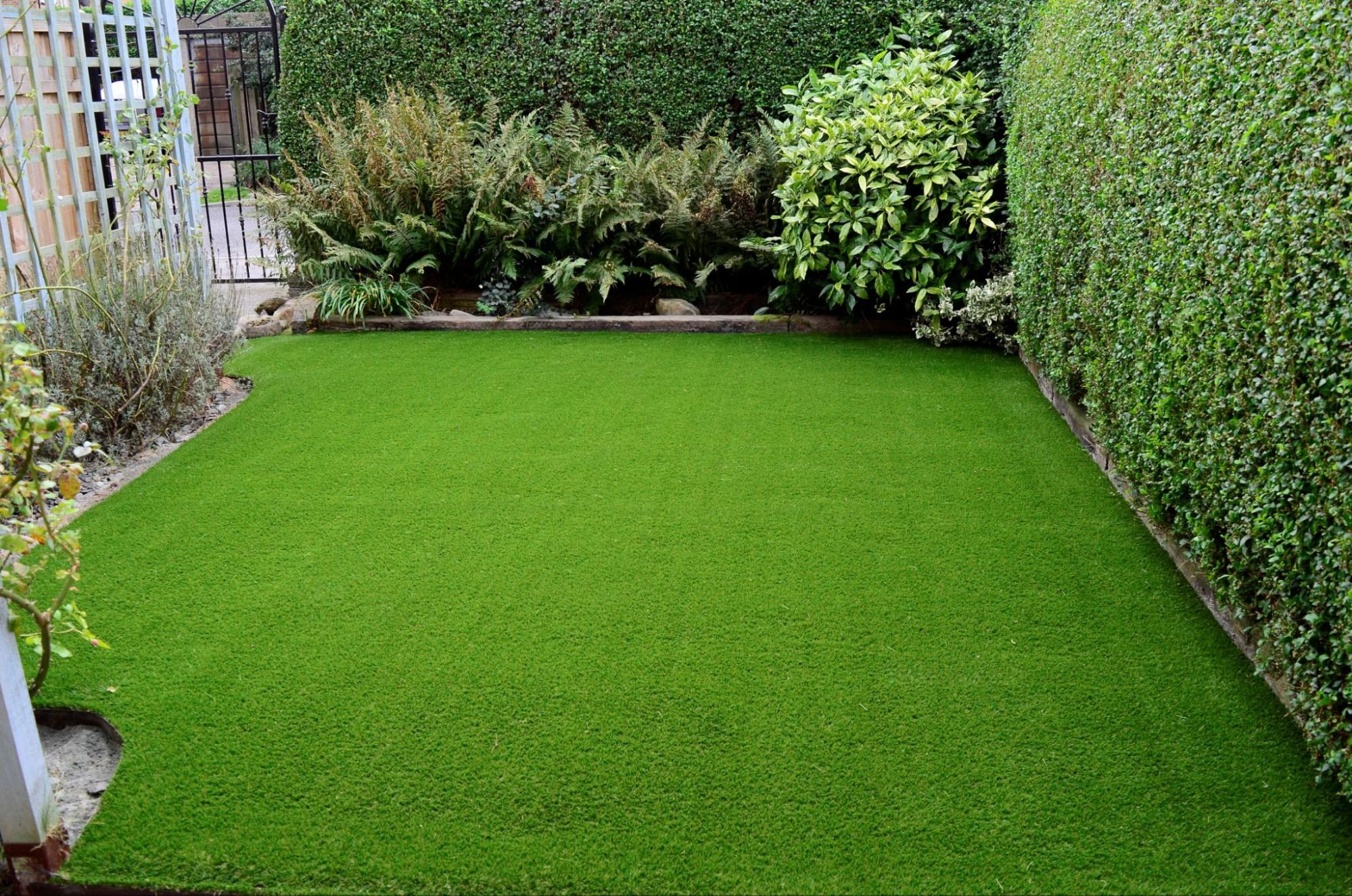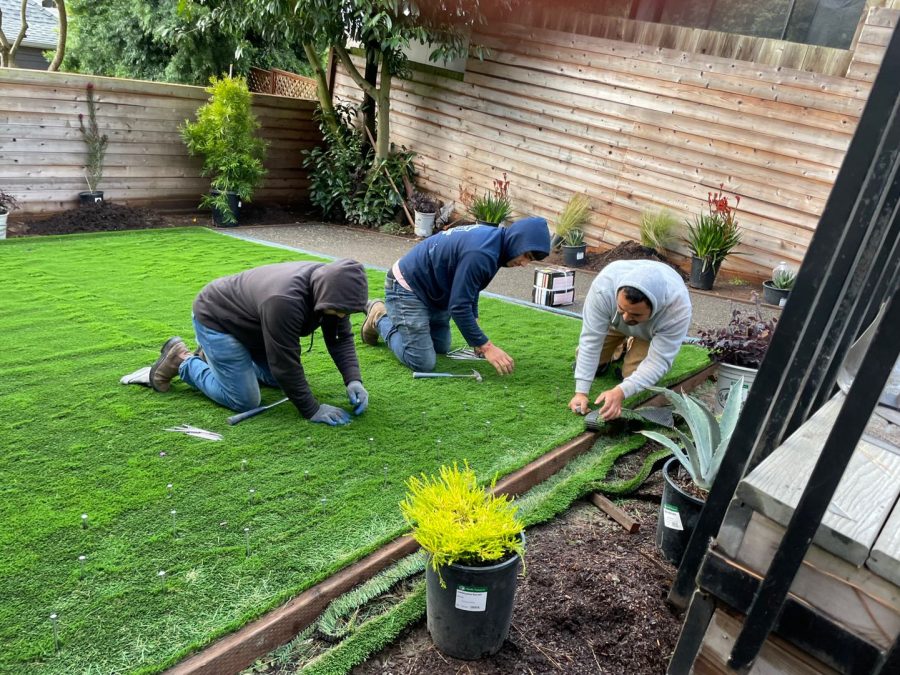Experience a Perfect Lawn with Arizona Artificial Turf for Any Outdoor Space
Experience a Perfect Lawn with Arizona Artificial Turf for Any Outdoor Space
Blog Article
See Why Homeowners Prefer Synthetic Grass for Lasting Landscaping Practices
As house owners increasingly focus on sustainability in landscaping, man-made turf has arised as a compelling choice to standard yard. What stays to be explored is the complete scope of advantages that artificial turf can provide to house owners and the environment alike.
Water Conservation Benefits
One of the most considerable advantages of fabricated turf is its duty in water preservation. In comparison, fabricated grass removes this demand totally, as it does not call for watering.
Furthermore, the installation of man-made turf can contribute to a much more lasting landscape. House owners can dramatically reduce their water bills, permitting reallocation of resources to other environmental efforts or household usages. Additionally, synthetic grass is developed to stand up to various climatic conditions without the demand for extra watering, making it a suitable selection for areas encountering water deficiency.
The environmental advantages prolong past instant water financial savings. By lowering water intake, artificial lawn assists to minimize the impacts of climate modification, protecting important ecological communities that are endangered by excessive water extraction. As sustainable landscaping practices acquire traction, synthetic grass becomes a responsible selection for home owners looking for to create environmentally friendly outdoor areas.
Reduced Upkeep Efforts
Synthetic grass considerably reduces maintenance initiatives compared to typical lawn yards. With artificial yard, home owners can get rid of the time-consuming jobs linked with all-natural landscape design, such as mowing, fertilizing, and weeding. This not just conserves beneficial time however also lowers physical labor, making grass treatment easily accessible for people of all ages.
One of the most remarkable benefits is the lack of regular mowing. Traditional lawns need constant cutting to keep a cosmetically pleasing height, whereas artificial lawn continues to be continually rich without the requirement for reducing. Additionally, house owners no more need to use chemicals or plant foods, which are typically called for to keep all-natural yard healthy and balanced. This change not just lightens the workload but additionally promotes a neater, extra consistent appearance year-round.
Additionally, fabricated grass is long lasting and durable, calling for marginal maintenance beyond periodic cleaning and rinsing to remove particles. This ease of maintenance permits property owners to enjoy their outdoor areas without the constant worry of upkeep, supplying even more time for recreation and household tasks. Inevitably, the lowered upkeep initiatives connected with synthetic grass make it an attractive alternative for those seeking a low-maintenance, aesthetically appealing landscape.

Ecological Effect Reduction
There is an expanding recognition of the environmental benefits related to synthetic grass, specifically in terms of water conservation and minimized chemical usage. Typical yards need considerable amounts of water, specifically in drought-prone regions, causing enhanced stress on local water resources. On the other hand, synthetic grass eliminates the demand for irrigation, drastically lowering water intake and promoting sustainability.
In addition, standard lawn maintenance typically involves the application of plant foods, herbicides, and chemicals, which can add to dirt and water air pollution. Fabricated grass alleviates this ecological risk by calling for very little maintenance and practically eliminating the need for dangerous chemicals. This not just enhances soil health yet likewise protects local ecological communities from poisonous runoff.
Furthermore, the production of natural lawn yards normally involves using fossil fuels for mowing and landscaping tools, further adding to greenhouse gas exhausts. By selecting artificial turf, home owners can substantially reduce their carbon impact associated with yard treatment activities.
Visual Appeal and Adaptability
Along with its ecological benefits, synthetic grass offers significant visual allure and flexibility for landscaping. navigate to this website Property owners can attain a lush, green appearance year-round, getting rid of the seasonal changes typically linked with natural grass. This regular visual not just improves the visual allure of a home but likewise adds to a well-maintained and polished appearance.
Moreover, synthetic grass is offered in a variety of colors, designs, and textures, enabling personalization to fit private preferences and layout motifs - Arizona artificial turf. Whether used in residential gardens, industrial spaces, or recreational locations, it can seamlessly integrate right into varied landscape design designs, from contemporary minimal to lavish exotic settings
The flexibility of synthetic grass prolongs beyond mere appearance; it can be set up in different places, including roofs, patio areas, and even interior rooms, developing opportunities for unique landscaping remedies. Additionally, it appropriates for a series of tasks, from kids's play locations to pet-friendly settings, giving capability without endangering design.
Ultimately, the aesthetic appeal and convenience of fabricated lawn make it an appealing choice for property owners seeking sustainable landscaping remedies that do not compromise elegance for environmental obligation.

Long-Term Cost Savings
One of one of the most engaging benefits of synthetic turf is its capacity for long-lasting price financial savings. Unlike all-natural yard, which needs routine upkeep-- including mowing, watering, feeding, and pest control-- synthetic grass dramatically decreases these continuous expenditures. House owners can conserve a significant amount on water bills, specifically in areas where water shortage is a pressing issue. The elimination of yard treatment solutions further contributes to financial cost savings, as there is no need for specific devices or labor.
In addition, artificial grass has a lifespan of 15 to 25 years, depending upon its quality and usage. This durability lessens substitute costs, making it a much more cost-effective option over time. Furthermore, the initial investment in synthetic grass can commonly be recovered with the cost savings built up in time.
While the upfront expense might seem higher contrasted to sod setup, the cumulative savings from decreased maintenance and water use typically surpass these preliminary expenses. Eventually, the adoption of fabricated lawn not only promotes a sustainable landscaping service but also supplies home owners a monetarily smart alternative that straightens with long-lasting budgeting goals.
Conclusion
Synthetic grass becomes a compelling alternative for lasting landscape design, offering considerable advantages in water preservation, lowered maintenance efforts, and diminished environmental impact. Its visual charm and convenience improve the aesthetic landscape while lining up with modern sustainability objectives. Lasting expense savings add to its appearance for property owners. As areas significantly prioritize eco-friendly methods, the fostering of synthetic grass stands for a progressive step towards attaining lasting and resistant landscapes.
Furthermore, synthetic grass is made to hold up against find different weather conditions without the demand for supplementary watering, making it an ideal option for areas facing water shortage. (Artificial turf companies phoenix)

Artificial turf arises as a compelling option for sustainable landscape design, supplying significant advantages in water preservation, reduced upkeep efforts, and diminished ecological influence.
Report this page